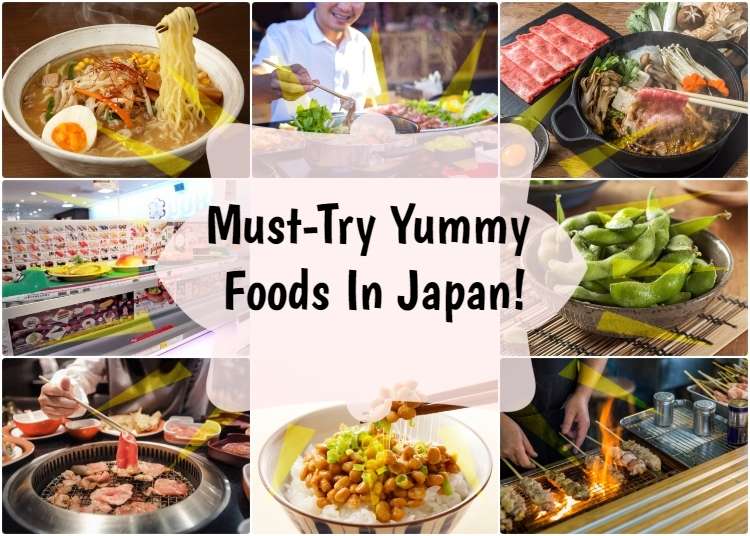
Life In Japan: Filipinos Recommend Yummy Foods In Japan!
- Written by: Lucio Maurizi
Japan is certainly world famous for some of its staple food like sashimi and sushi, but the amount of dishes that one can find in this country is overwhelming. How to choose where to start from if you’re visiting?
You may be planning your first trip to the Land of the Rising Sun and knowing where to go dine to get the most out of your experience can be a real priority. As always, the best option is to ask those who have already been here, especially the ones who visited from your home country.
To get a beat on what people from other cultures recommend for visitors to Japan, we talked with several Filipinos at the recent Philippine Festival in Tokyo. They were happy to share their recommendations on food for those of you travelling here from the Philippines. Let’s dive into it! We don’t want to delay food talk too much!
1. Know what? Natto!
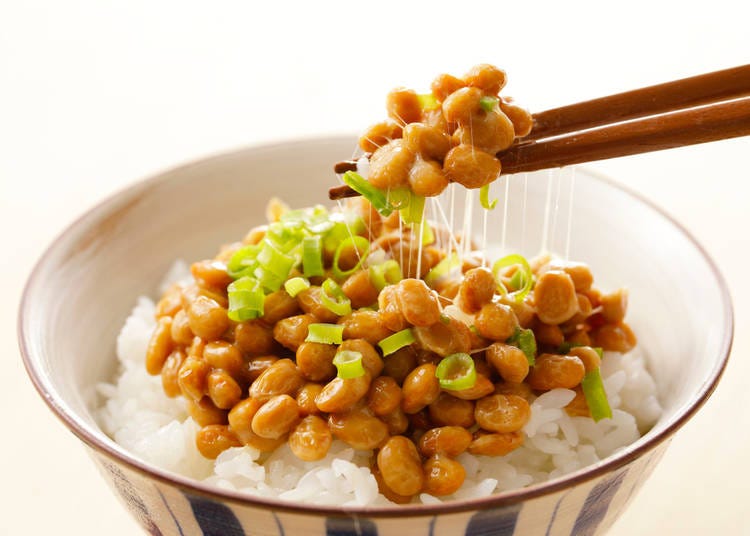
Natsumi D. was born in Japan. Her mother is from the Philippines and she knows Japanese food equally as well as Filipino food. “The food in Japan looks very different from the food in the Philippines – Natsumi points out. In the Philippines the food is science. It’s bright and colorful. Japanese food is less colorful and has a milder scent. But I recommend natto! One time I brought natto to the Philippines but people didn’t like the smell!”
Natto is a very unique recommendation because, while delicious, it appears unappetizing and it has a very strong smell. Most foreigners have a hard time trying it for these reasons. Natto is fermented soy beans. Its texture is sticky and it has what to most could be an overwhelming smell. Don’t let this deter you though! Try it with rice (you can find it as a small snack in all convenience stores). Mix it with Ponzu (a sour dressing used for many dishes). You may come to love this unique Japanese food!
2. Go fried or grilled: Tempura and Yakitori
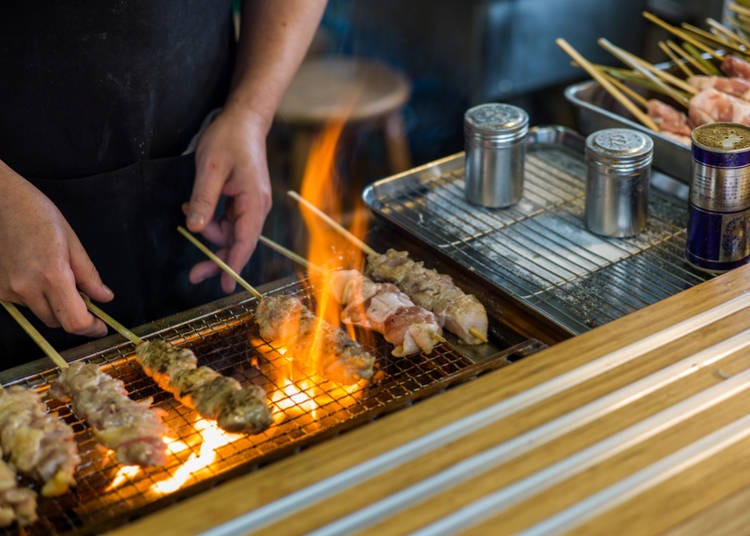
Gina H. has lived in Japan for 24 years. She’s a dancer and entertainer and is married with two children and two grandchildren. “Good food depends on personal preferences, I think. But Japan is a very clean place, so no matter what you like, food will not be a problem. Oh! What about tempura? It’s a very special food in Japan. And yakitori.”
Gina even has her favorite yakitori restaurant: “It is my favorite place because the people and the place are fantastic. It’s very friendly.”
Tempura is indeed a very traditional Japanese food. It’s a dish of fish, shellfish, or vegetables fried in a very tasty and crunchy batter.
Yakitori (literally chicken on a stick) is a dish of skewed meat cooked on a grill. There’s a huge variety of yakitori (definitely enough to satisfy any meat lover).
Restaurants who specialize in these dishes are also going to be very easy to find in Tokyo and all over Japan as they are among the most popular dishes not only among foreigners, but among Japanese patrons as well.
3. Surf and turf? Sashimi and yakiniku!
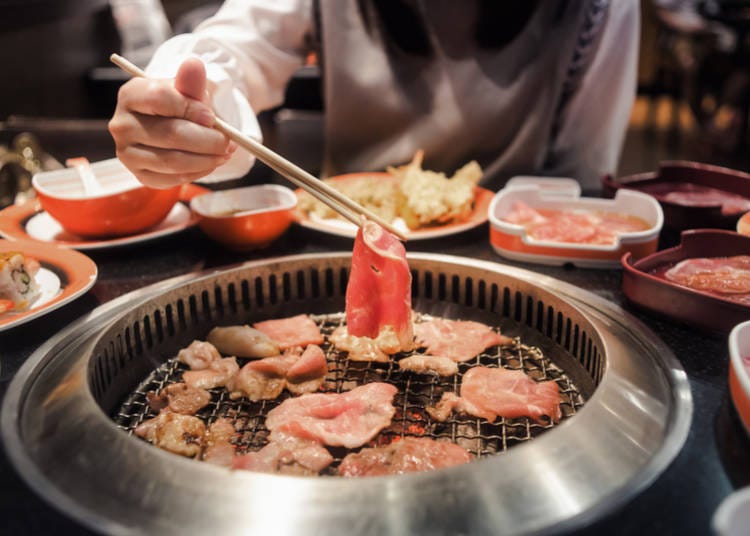
Maureen A. has been in Japan for two years and lives with her family in Edogawa. It was hard for Maurine to pick only a few among the Japanese dishes to recommend but she eventually told us that she “Likes sashimi and yakiniku the most among Japanese foods. I think Yakiniku would be easier to try for the first time for Filipinos, compared to sashimi. Since sashimi is raw fish, it may appear weird.”
Of course, when talking about recommended Japanese food, we couldn’t miss sashimi. Sashimi is fresh raw fish, usually consumed with soy sauce and wasabi (a strong tasting green root similar to horseradish).
While it may seem a little weird to many cultures to eat raw fish, sashimi is indeed delicious and liked by the overwhelming majority of Japanese people and foreigners visiting or living in Japan. There are many different fish that can be used, as well as different cuts and preparations. In fact, while cheap and tasty sashimi can easily be found, there are also restaurants that specialize in very high quality sashimi and chefs study and work as apprentices for years in order to master the art of its preparation.
Yakiniku is the Japanese version of Korean grilled meat. Once again, you’ll easily find many restaurants (including several all-you-can-eat franchises) where you will be able to enjoy a variety of meats and sauces, which will surely leave you full and satisfied!
4. Seeking something different? Sukiyaki!
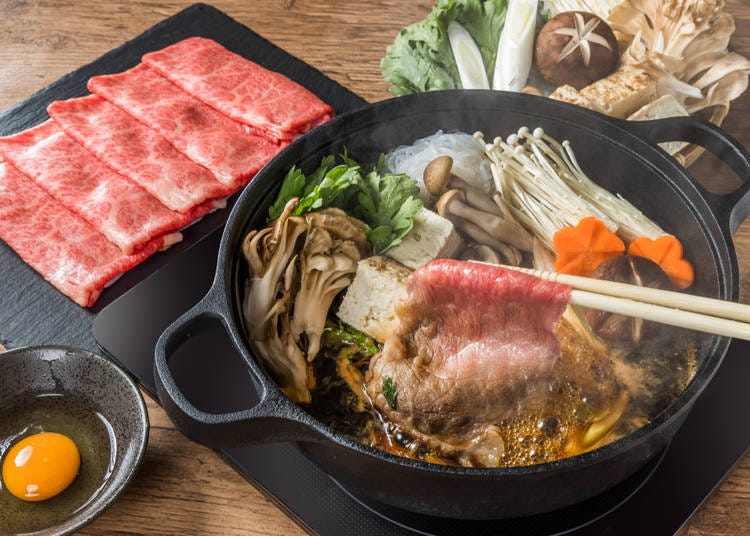
Iann H. has lived in Japan for almost 2 years and is very knowledgeable about Japan and Tokyo in particular. He works for the Philippine Embassy, in the Labor department. We asked him about food recommendations for Filipino visors to Japan.
“I would recommend sukiyaki because there are many Filipino foods that are quite similar. Most of our food has a lot of soup in it. I would say it’s like sinigang or adobo. You know, we mix a lot of veggies and meat and boil them. So that’s why I think it would be very similar to the Filipino’s palate. Also, edamame! It’s good with beer. And mochi!”
Sukiyaki is one of the variations of Japanese hot pot. Like Iann explained is a mix of vegetables and meats in a pot of boiling water mixed with soy sauce, mirin and sugar that you can enjoy by dipping it in sauces or raw egg. It’s very tasty especially with beef and it’s a perfect meal for cold winter days.
Edamame is a typical Japanese appetizer of immature soy beans still in their pod served with a little bit of salt. If you ever visit an izakaya (a typical Japanese restaurant/bar), this will be one of the most commonly ordered items.
When it comes to mochi, Japan has a whole culture revolving around this dish prepared with a paste of rice. It can be found in a myriad of varieties: sweet, salty, bland, cold, or hot, mixed with fruit or green tea flavors and much more. If you visit Japan from the Philippines, this would certainly be one of the must-try foods.
5. Food entertainment? Sushi!
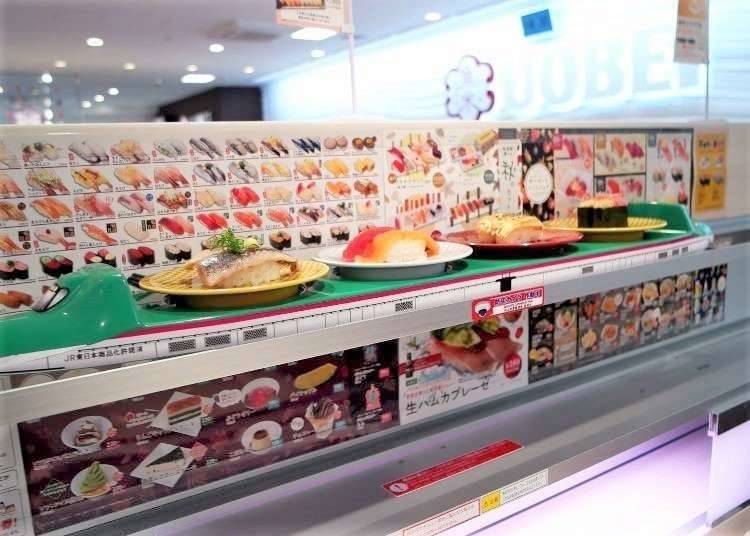
Grace M. has now been in Japan for 14 years. She works at an insurance company and for the past 2 years has been one of the singers of the Philippines national anthem during the Philippine Festival in Tokyo. With an eye to tradition, but also to one’s budget, she recommends: “Sushi. It’s tasty and it’s cheap. Especially the rolling sushi.”
We all know what sushi is, but what did Grace mean by rolling sushi? Rolling sushi restaurants and chains are dining places where the sushi is literally transported on a rolling mat to your table. In many places you can just choose whichever dish you prefer from the ones rolling in front of you. You can also order your favorite kind via a small touch screen. Do it and you’ll see your order arrive at your table via the rolling mat within minutes.
These places are very popular among Japanese patrons, and also among foreigners. They serve quality food at extremely low prices.
6. Family restaurants are awesome
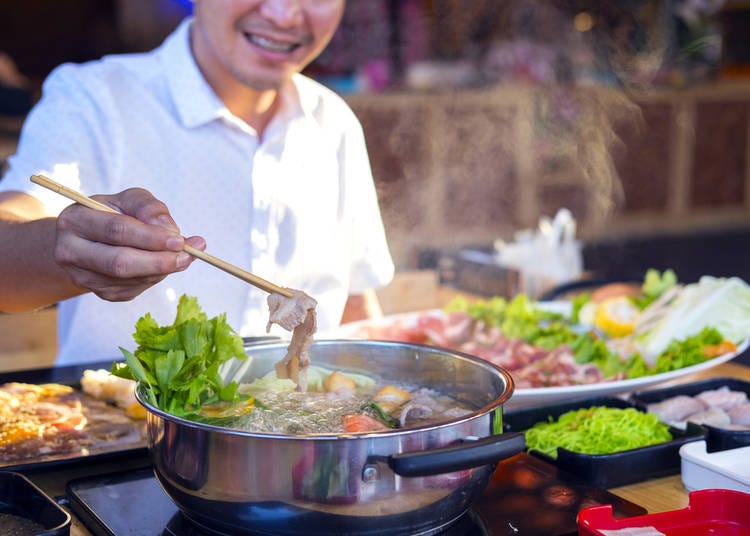
Miku, a university student who has been living in Japan for 15 years, also agrees with Grace by saying that she recommends “sushiro (rolling sushi) because it’s cheap and delicious, and children would enjoy it because it moves and it can seem rare and fun.”
In fact, adults and children alike seem to really enjoy the trademark of rolling sushi restaurants.
When in Japan you can have a fun dining experience in these comfortable, cheap, and fun restaurants with your whole family.
Miku’s friend, Biana, who lived in Japan for 12 years, recommends to try “Shabu Shabu. Also the restaurant Saizeria because the food is delicious and cheap.”
Shabu shabu is another kind of Japanese hot pot in the nabe style. Different kinds of meat and vegetables are boiled and enjoyed with sesame, or ponzu sauce (or a mix of the two).
The restaurant Saizeria is a very famous chain of restaurants in Japan, which serves fast, affordable and delicious food, making it a recommended stop for most people in a rush to get back to sightseeing.
7. Ramen!
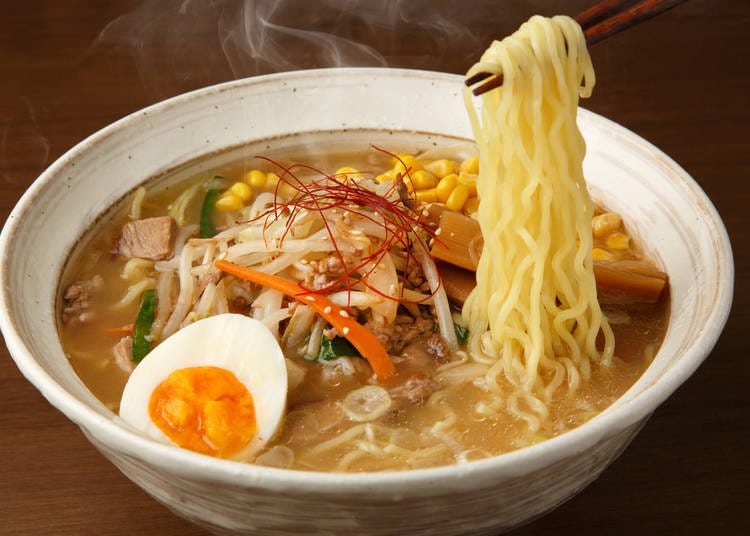
Cristy R., planning to stay in Japan for 3 years and who has already spent half of that time in the country, working in a bakery, recommends another Japanese staple dish… But she also warns you… “During winter I love ramen! It’s killing me! I’m getting fat eating ramen!”
Ramen is a kind of Japanese noodle dish served in different kinds of soup guaranteed to make everyone happy. It’s mostly served hot, but you can also find the cold variety. Ramen is very famous all over the world for its instant-ramen counterpart, but trying ramen in a restaurant in Japan will surely amaze you with its taste.
Ramen is extremely easy to find. It’s a perfect “fast food” and shime (the last meal before heading home) and, on top of that, it’s very affordable.
So! Here you have it! The Filipinos have spoken and have a lot of recommendations for all of those who would like to come to Japan and try some of the local cuisine.
You will immediately notice when you visit any city in Japan, and especially Tokyo, that restaurants are everywhere. Very often multiple businesses occupy a single building. Neon and wooden signs can overwhelm even the most experienced traveler. But you have an advantage: you’ve now some inside hints into what to try - but don’t forget to explore and experiment. You won’t regret it!
Lucio Maurizi is an automotive expert specializing in Japan's car scene and auto-tourism. With an MA in East Asian History from La Sapienza Università di Roma, he's a multi-talented contributor to travel platforms like LIVE JAPAN, Japan Travel, and GPlus Media. His Instagram account (50k+ followers) offers insider views on Japan's automotive culture. Lucio also actively collaborates with professional drivers and influencers and organizes can't-miss car events in Tokyo.
- Category
*Prices and options mentioned are subject to change.
*Unless stated otherwise, all prices include tax.
Popular Tours & Activitiess
Recommended places for you
-

Tokyo City Pass Upgrade: Harry Potter Studio Tour & Top Sights up to 85% Off
by: Guest Contributor
-

Keisei × Keikyu 16-Temple Goshuin Tour: Discover Deeper Tokyo & Yokohama
by: Guest Contributor
-

Don't Miss Out! The One Thing You Must Do Before Shopping at Mitsui Shopping Park LaLaport: Get Your Max 10% OFF Coupon Book
-

Enjoy Japan's Gorgeous Winter Lights! Ride the Romancecar to Shonan no Hoseki Illumination
by: Guest Contributor
-

Simply Oishii Wagashi School Discover Japanese Culture Through Wagashi: A Hands-On Experience!
by: Guest Contributor
-

A Travel Game Changer! Go Hands-Free Between Tokyo and Kyoto with LUGGAGE EXPRESS by JTB and JR Tokai
by: Guest Contributor
-

Kichijoji – Explore Tokyo’s Top-Rated Stylish Suburb in Half a Day!
-

Easy Day Trip from Tokyo! Ultimate Sightseeing Guide for Hakone & Lake Ashinoko!
-

Visiting Hokkaido Japan: 14 Things to Know Before Traveling to Japan's Wild North
-

3 Japanese Spirits to Drink: Sake, Shochu, Umeshu
-

We Ordered Food at This Susukino Restaurant in Sapporo, But We Weren't Expecting What Happened Next!
-

Top 7 Popular Japanese Mushrooms That Are Both Tasty and Healthy
- #best sushi japan
- #what to do in odaiba
- #what to bring to japan
- #new years in tokyo
- #best ramen japan
- #what to buy in ameyoko
- #japanese nail trends
- #things to do japan
- #onsen tattoo friendly tokyo
- #daiso
- #best coffee japan
- #best japanese soft drinks
- #best yakiniku japan
- #japanese fashion culture
- #japanese convenience store snacks




















